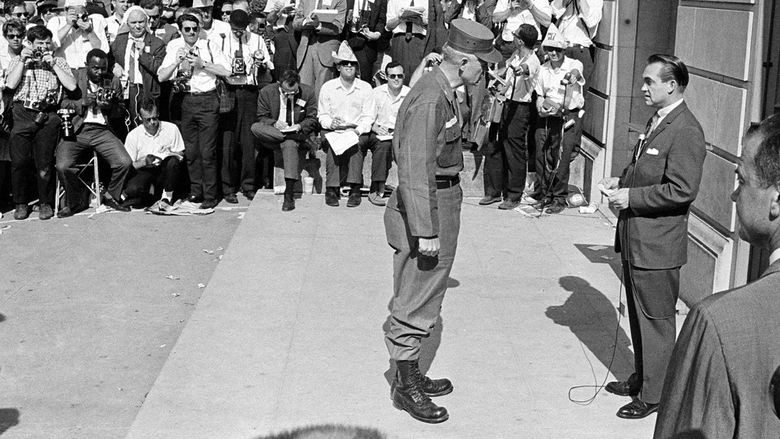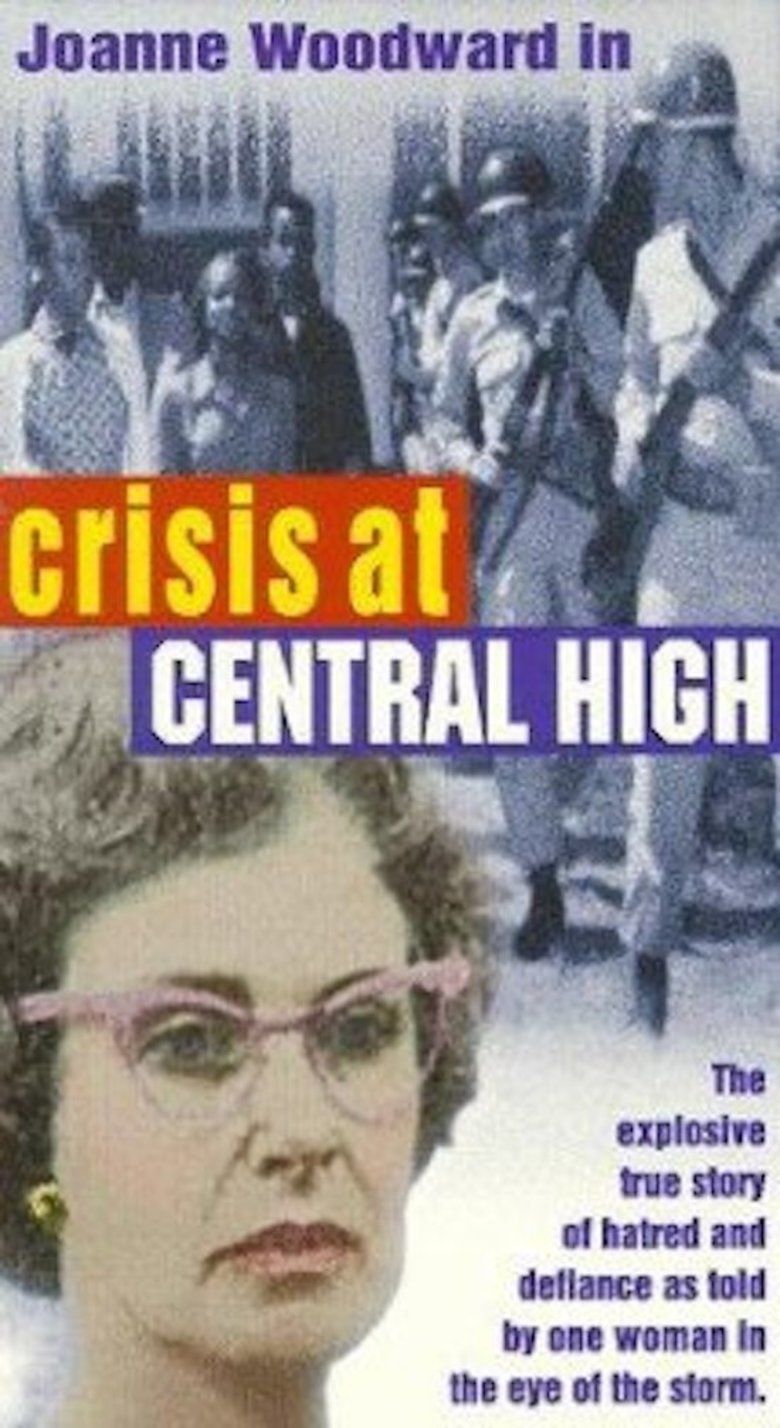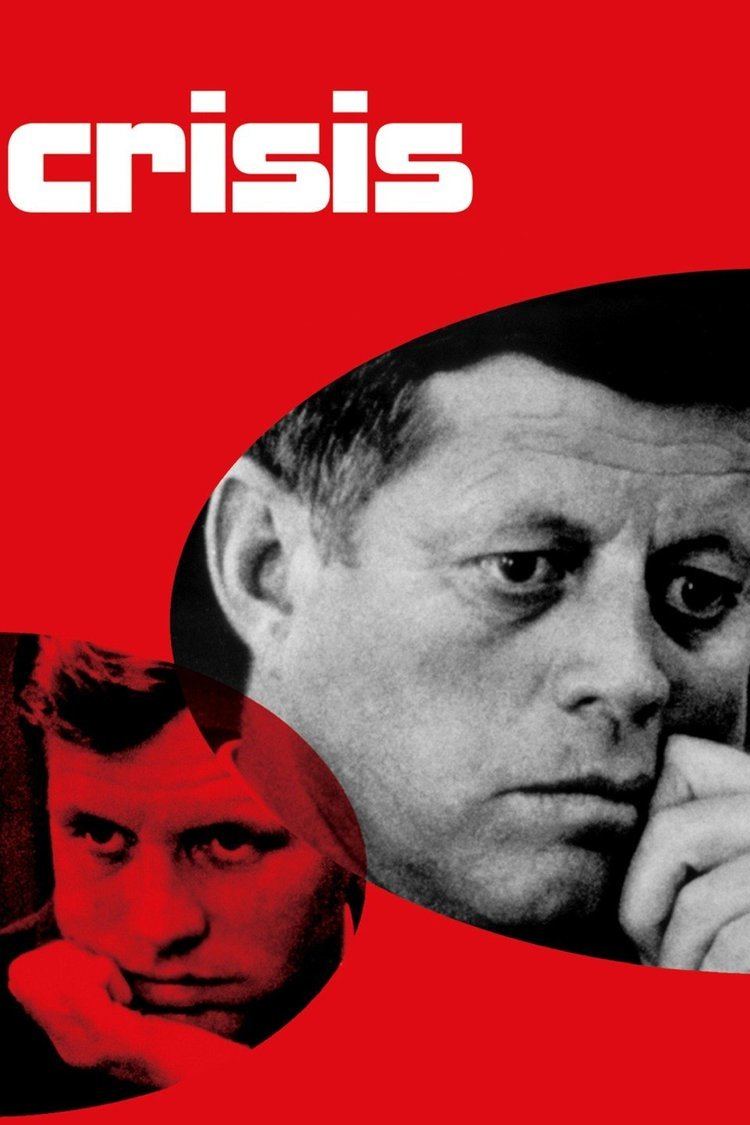Crisis: Behind a Presidential Commitment
8.2 /10 1 Votes
Initial DVD release November 11, 2003 Duration Language English | 8/10 IMDb Genre Documentary Film series Living Camera Country United States | |||||||||||||||||||||||||||||||||
 | ||||||||||||||||||||||||||||||||||
Release date October 21, 1963 (1963-10-21) Cast (Himself), Robert F Kennedy (Himself), Vivian Malone (Herself), (Himself), James Lipscomb (Narrator)Similar movies Good Will Hunting , How High , Strange Fruit , Black Sun: The Mythological Background of National Socialism , But... Seriously , Baldwin's Nigger | ||||||||||||||||||||||||||||||||||
Crisis behind a presidential commitment
Crisis: Behind a Presidential Commitment is a 1963 cinéma vérité documentary film directed by Robert Drew. The film centers on the University of Alabama's "Stand in the Schoolhouse Door" integration crisis of June 1963. Drew and the other filmmakers, including D. A. Pennebaker and Richard Leacock, were given expanded access to key areas, including United States President John F. Kennedy's Oval Office and the homes of United States Attorney General Robert F. Kennedy and Alabama Governor George Wallace. The film first aired on ABC television four months after the incident. In 2011, it was added to the National Film Registry of the Library of Congress.
Contents

Synopsis

During a two-day period before and after the University of Alabama integration crisis, the film uses five camera crews to follow President John F. Kennedy, attorney general Robert F. Kennedy, Alabama governor George Wallace, deputy attorney general Nicholas Katzenbach and the students Vivian Malone and James Hood. As Wallace has promised to personally block the two black students from enrolling in the university, the Kennedy administration discusses the best way to react to it, without rousing the crowd or making Wallace a martyr for the segregationist cause.

They come up with a plan to quickly federalize the Alabama National Guard and return later the same day, if Wallace indeed refuses to step out of the way despite the court order. The plan works; Wallace steps aside under orders from General Henry V. Graham, but is given the chance to save face and leave before the students enter the building. President Kennedy later gives a speech on equality on national television, and a third black student, Dave McGlathery, enrolls without incident.
Reception
Although opinions on Crisis: Behind a Presidential Commitment were sharply divided after the October 1963 broadcast, it is now considered among the landmark films of cinéma vérité, or direct cinema. Peter von Bagh rated it ahead of Drew's earlier work Primary, considering it the most touching and intimate portrait of the Kennedy brothers on film. Fred Kaplan, in a review of the film's 2009 DVD release for The New York Times, wrote that "though we now know the story’s ending — the students were finally let in — the suspense is gripping." He dubbed it "the first movie that Barack Obama should watch in the White House screening room."
In 2011, this film was deemed "culturally, historically, or aesthetically significant" by the United States Library of Congress and selected for preservation in the National Film Registry. The Registry said that Crisis "has proven to be a uniquely revealing complement to written histories of the period, providing viewers the rare opportunity to witness historical events from an insider’s perspective." The Academy Film Archive preserved Crisis: Behind a Presidential Commitment in 1999.
References
Crisis: Behind a Presidential Commitment WikipediaCrisis: Behind a Presidential Commitment IMDb Crisis: Behind a Presidential Commitment themoviedb.org
